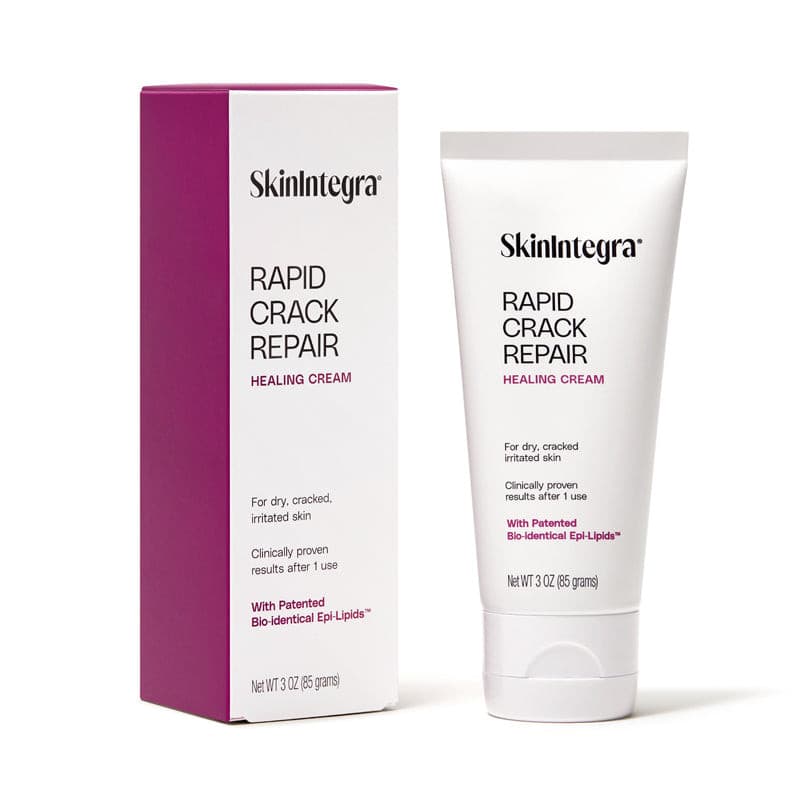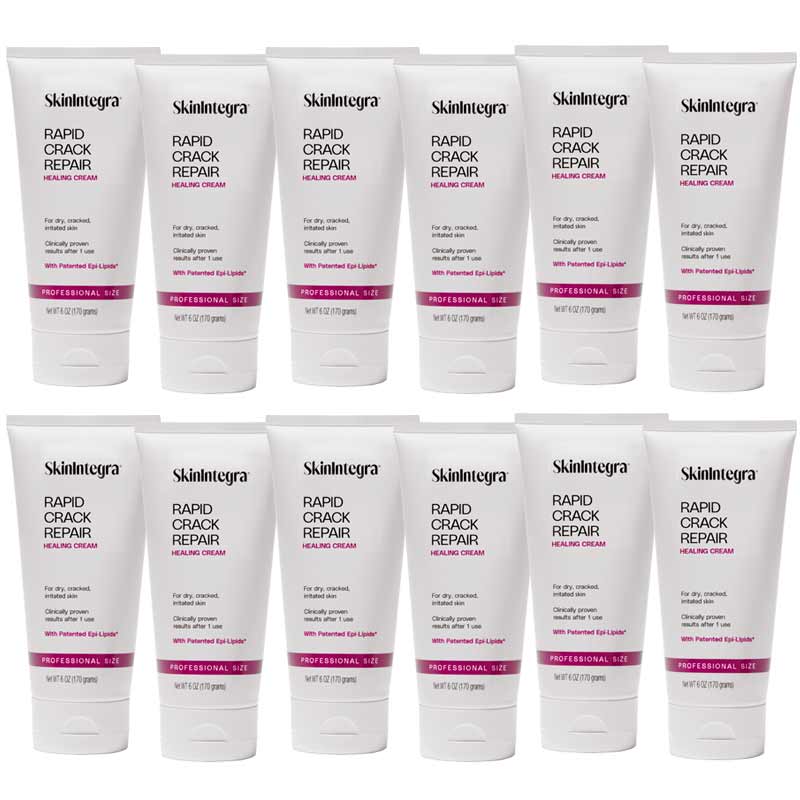Are your feet feeling rough and peeling? Peeling skin on the bottom of your feet can be uncomfortable and even embarrassing, but with the right care and techniques, you can have soft and smooth soles in no time.
In this comprehensive guide, we will walk you through the various causes of peeling skin on your feet, from dryness to fungal infections. We will explore effective treatment options, including moisturizers, gentle exfoliation techniques, and medicated creams. We will also cover preventive measures, such as proper hygiene, wearing breathable footwear, and avoiding harsh chemicals.
Whether you're dealing with mild peeling or more severe symptoms, this guide has got you covered. Say goodbye to rough and peeling feet, and hello to soft and smooth soles.
What Causes Peeling Skin on the Bottom of the Feet?
Peeling feet can stem from a range of causes—some harmless, others requiring medical attention. In people with diabetes, even mild peeling should be taken seriously.
1. Dryness and Dehydration of the Skin
Dry skin is the most common reason for peeling soles. Harsh soaps, low humidity, cold weather, hot showers, or prolonged standing can all contribute. People with diabetes may experience skin dryness due to poor circulation or reduced sweat gland function, especially in the feet.
2. Fungal Infections
Athlete’s foot (tinea pedis) often starts between the toes but can spread across the bottom of the feet. It’s caused by a fungal infection and thrives in warm, moist environments. Symptoms include itching, peeling, redness, and sometimes blisters.
3. Calluses and Corns
Thickened skin from pressure or friction can crack or peel, especially if they’re dry or improperly removed. In diabetes, cracked calluses can become open gateways for infection.
4. Eczema, Psoriasis, or Other Skin Conditions
Chronic inflammatory skin conditions can affect the soles of the feet, leading to recurring peeling, scaling, and sensitivity.
5. Poor Footwear or Excessive Sweating
Shoes that don’t allow your feet to breathe can trap moisture, increase friction, and lead to peeling or blistering.
What Diabetic Foot Peeling Means—and Why It Matters
While not exclusive to diabetes, peeling feet are more likely to occur in people with diabetes due to:
-
Reduced circulation and nerve function
-
Delayed wound healing
-
Greater susceptibility to fungal infections
This is why any persistent peeling, cracking, or skin change in your feet should be monitored and addressed early if you have diabetes.
Symptoms to Watch For
The following signs often accompany peeling feet:
-
Dry, flaky patches
-
Cracked heels or fissures
-
Redness and itching
-
Odor (especially if fungal infection is present)
-
Discomfort while walking or wearing shoes
Safe Foot Hygiene Practices for Diabetic Skin
If you have diabetes, proper foot hygiene is not just about comfort—it’s about preventing complications.
Wash Gently, Dry Thoroughly
Use lukewarm water and mild soap. Avoid soaking, which can weaken the skin barrier. Always pat dry gently, especially between the toes.
Keep Feet Dry
Damp skin invites infection. Dry carefully and consider moisture-wicking socks.
Change Socks Daily
Use breathable, non-binding socks. Cotton and wool blends work well to manage moisture.
Use Talc-Free Foot Powder
Look for antifungal powders if you’re prone to sweating. Apply lightly and avoid getting powder between toes if you’re at risk of fungal growth.
How to Prevent Peeling Feet in Diabetes
Prevention matters. Here’s how to minimize your risk:
-
Moisturize daily with a diabetic-safe foot cream (see our recommended solution below)
-
Wear shoes made of breathable materials like leather or canvas
-
Avoid walking barefoot in public areas
-
Trim toenails straight across and keep them clean
-
Rotate shoes to let them air out
Is It Safe to Soak and Scrub Peeling Feet?
If you have diabetes: proceed with caution.
-
Foot soaking is not recommended, as it can cause the skin to become overly soft and more prone to injury.
-
Avoid pumice stones or foot files, which can accidentally cause breaks in the skin and lead to infection.
Instead, use chemical exfoliants formulated for diabetic skin—gentler options that help remove dead skin without physical abrasion.
Diabetic-Friendly Treatments for Peeling Feet
Urea-Based Moisturizers
Urea helps break down dead skin cells and retain moisture. Concentrations between 10–25% are ideal for foot skin in people with diabetes.
Barrier Repair Creams
Look for creams that contain ceramides, cholesterol, fatty acids, and humectants (like glycerin or hyaluronic acid) to mimic and restore the skin’s natural protective layer.
Antifungal Creams
If a fungal infection is present, use OTC antifungal treatments (e.g., clotrimazole) for 2–4 weeks. Avoid using multiple products unless instructed by a physician.
Cortisone Cream (with caution)
If itching or redness is significant and not caused by fungus, a 1% hydrocortisone cream can be used sparingly.
When to See a Doctor
Contact your healthcare provider or podiatrist if you experience:
-
Deep cracks or bleeding
-
Signs of infection (warmth, pus, redness)
-
Peeling that doesn't improve after 2 weeks
-
Sudden onset of symptoms or ulcers
Best Urea Foot Cream for Diabetics: Why SkinIntegra Works

SkinIntegra® Rapid Crack Repair Cream is a clinically proven solution for dry, cracked, and peeling skin—specially formulated for the needs of diabetic skin.
What makes it different?
-
25% Urea & Lactic Acid: Exfoliate and soften thickened skin gently but effectively.
-
Barrier-restoring lipids: Mimics the natural composition of healthy skin, including ceramides and fatty acids.
-
Fragrance- and irritant-free: No parabens, dyes, or petroleum that can delay healing or trigger reactions in sensitive skin.
-
Clinically validated: In a study with patients with diabetes, 100% of subjects saw improvement in dry, cracked, or peeling skin in just 24 hours.
-
APMA Seal of Approval: Trusted by podiatrists and safe for use in patients with diabetes.
-
Used post-debridement and for chronic fissures: Recommended by leading podiatry clinics nationwide.
Shop SkinIntegra Rapid Crack Repair Cream
Your skin deserves more than temporary relief—experience visible improvement and softness from day one.
FAQ: Peeling Skin on the Bottom of the Feet
Q: Is peeling skin on feet always a sign of fungus?
A: No. While fungal infections are common, peeling can also result from dryness, eczema, or friction. Diabetic skin may peel from circulation issues even without infection.
Q: Can I exfoliate peeling skin if I have diabetes?
A: Physical exfoliation is risky. Use urea-based creams instead, which exfoliate chemically and safely.
Q: What cream is best for diabetic feet with peeling skin?
A: Look for urea-containing creams with barrier-repair ingredients—SkinIntegra Rapid Crack Repair Cream is specifically designed for this.
Q: When should I see a doctor about peeling feet?
A: If symptoms persist, worsen, or show signs of infection—or if you have diabetes and notice cracking or delayed healing—consult a podiatrist promptly.
Q: What if my feet are peeling but not itchy?
A: Not all foot peeling is caused by fungus or irritation. Dryness, poor circulation, or callus buildup—especially in diabetic skin—can cause peeling without itchiness. It’s still important to treat and moisturize to prevent cracks and infection.





